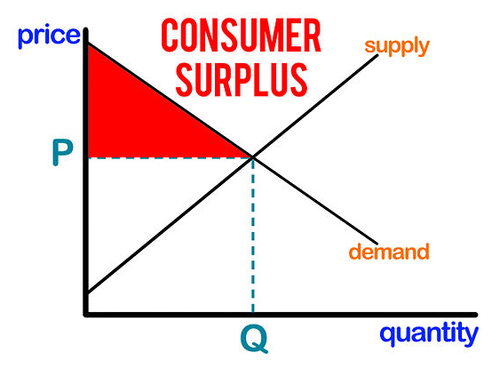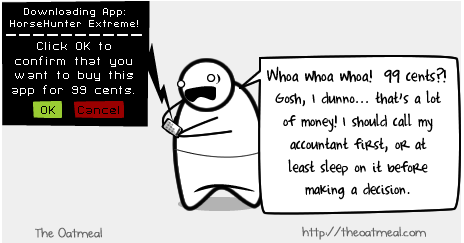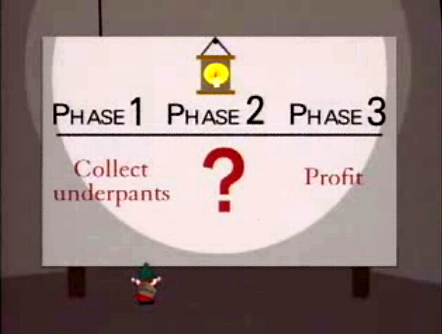Trending
Opinion: How will Project 2025 impact game developers?
The Heritage Foundation's manifesto for the possible next administration could do great harm to many, including large portions of the game development community.

Featured Blog | This community-written post highlights the best of what the game industry has to offer. Read more like it on the Game Developer Blogs or learn how to Submit Your Own Blog Post
Indie developers struggle with the question of how to price their game and when to put in on sale. This article gives a framework for understanding pricing and suggests a 3-step approach, including a recommendation to announce price drops well in advance.

Earlier this week we announced the launch date and price for Axiom Verge. I’ve been working with Tom on it for about six months now, and if I’m this excited about launching it,I can only imagine how Tom must be feeling after having worked on it alone for five years!
Most of the feedback has been great, but there were a few people who questioned the $19.99 price point. The reason I’m writing this blog post is actually not to defend the price. Instead, my focus is going to be on discussing the thinking behind it, since a lot of developers have asked me for advice on how to approach pricing their games over the years.
The Economics 101 approach to pricing is fairly straightforward. There is a group of potential buyers out there. Each one makes an independent assessment of what they feel your game is worth. If you have perfect information about what each person’s maximum willingness to pay is, you could pick the price point that will maximize revenue (price x quantity sold,where the higher the price is, the lower the quantity sold will be and vice versa), and therefore profits. In the case of digitally distributed videogames, once the game is done, maximizing revenue and profits is the same thing, since all of the costs are sunk/fixed. There are no real incremental costs to producing more copies of your game that factor into the decision.
Anyone whose maximum willingness to pay was higher than the price you set is getting a great deal. Anyone whose maximum price is equal to your price is indifferent between buying your game and not. Some developers and publishers try to make sure that no one is getting too great a deal. For anyone whose willingness to pay is really high, you can offer things like season passes, DLC, or other high margin items to capture all of that extra money. I personally find that kind of thing hard to do in a tasteful way. UbiSoft, EA, and Zynga don’t seem to have much of a problem with it.

Note that in this theoretical model one of the things pricing should not be based on is development budget. One argument I hear a lot is that AAA games should be priced higher than indie games because they cost more to produce. With just a little thought,you can see that this doesn’t make sense for a variety of reasons. First, if a game is priced too high, you’ll wind up making less money since the number of buyers goes down – regardless of what your development costs were. A lot of people seem to think that a higher price leads to more money, so developers who charge a high price are greedy. Second, why should a player care how many people worked on a game? If I had a magic wand and could produce a game with the same scale and quality of Skyrim or GTA: V instantly with no effort, would that make the game experience worth any less? If I spent $20 million dollars producing a fart app, would that mean it’s worth paying more for? No. No, it would not.
Economics can give great insights into a wide manner of business decisions precisely because it doesn’t get bogged down in the details. However, when it comes to dealing with the real world, other factors need to be taken into account. And by the way, Economics isn’t the one discipline guilty of this.Relevant XKCD:

One of the biggest problems is that games are in a category referred to as experiential goods, meaning that people can’t attach a value to them until they’ve experienced them. Movies and books are in the same category. Consumers try to mitigate this problem by relying on expert reviews, friend recommendations, demos, and user ratings, but these are imperfect solutions. Developers and publishers who believe people’s maximum willingness to pay is irrationally high (meaning that they know players are expecting to enjoy the game more than they actually will) have an incentive to keep this information from people for as long as possible. This is why some publishers embargo their reviews until after either the game launches or the pre-orders are in. The flip side is equally true – whereas the common practice is to release a game as soon as it passes certification, we’re working with Sony to make sure that reviewers can get their hands on the game almost a month ahead of time.

Imagine you’re at a baseball game. Something important is going on, so you stand up to get a better look. That’s a perfectly rational thing to do. It maximizes your own self-interest. Now the person behind you also has a choice: either stay seated and not see, or stand up to see better. If they’re going to maximize their own self-interest, they’re going to choose to stand. And so on. Eventually, everyone is standing, but no one is seeing any better than they did before. Everyone’s just uncomfortable.
The same goes with price promotions. (I’ll avoid calling them sales so as not to confuse the term with sales of the game.) When sales have slowed down, the rational thing to do is to reduce your price. Each game that does this makes a lot of money – in fact the majority of their money – doing this. Gabe Newell famously told the world in 2011 that when they reduced their price by 75% their revenue went up by 40x!
But if everyone does this, you eventually get a race to the bottom. Players are being trained not to pay full price. I’m as guilty of this as anyone. From bundles to sales, I’ve got well over 200 games in my Steam account, many of which I’ll never play. (Many, in fact, that I don’t even realize I own. I remember checking out a game at PAX that was really cool. I went home to buy it only to find that I already owned it.) And now with PS Plus, I already have a bunch of games on my PS4 and Vita that I don’t really expect to play. On the App Store, people agonize over whether to part with 99 cents for a game.

One could argue that those games that got revenue from me that they otherwise wouldn’t have, which is a fair statement. But at what cost? If everyone treated sales as a special once in a blue moon event, could we get more people paying a real price that developers can live off of and develop a sustainable business on?
Incidentally, the reverse is also true. Players are acting in their own short-term self-interest by waiting for sales. They can get a free ride from the people who pay full price (or from the developer who can’t earn a living), and get the same games at a small fraction of the price. Unfortunately, that’s not good for players as a group. If players insist on only buying during heavily discounted sales, then eventually quality will wither away. Just look at the App Store.
There is one valid argument (aside from short-term self-interest) for buying games during sales that immediately jumps to mind. Because games are an experiential good and no one can assess a value to them until they’ve been experienced, it makes sense to pay as little as possible up front. I think we’ve all bought games that we thought would be great and wound up only playing for 5 minutes. Until there is a decent mechanism for adjusting your purchase price after you’ve finished the game, the only solution to this is for these people to wait for sales. I’ve tried to think of ways to ameliorate this. Maybe a virtual tip jar after completing a game? Maybe offering more merchandise? Maybe go the other way – charge full price but allow people to get a refund if they don’t play it for more than a certain amount of time. (Essentially a demo where you pay up front.) None of these solutions is perfect, but developers, platforms, and players need to give this problem some serious thought if we don’t want to drown in a sea of crap.
One of the characteristics of a situation in which there is a disconnect between what’s best for the individual and what’s best for the group at large is the idea that, if we could all collude and come to an agreement on how everyone should price their games, we would be better off. Fortunately or un-, there’s no (legal) way to do that. Instead, I would just implore developers to consider the worth of their game and have the conviction to stick to their guns and charge a reasonable price. And players should make an effort to consider what these games are really worth to them. Not what the going rate is, but what are they worth.
Economic theory describes two primary models for how prices are set. The first one, which I described above, is for situations where you have a product that doesn’t really have an obvious substitute. If people want your product, they have to pay what you’re charging for it. The other model is for commodities. A wheat farmer can’t go to market and convince everyone that their wheat is better than anyone else’s. They can’t set the price for their wheat. They just show up at the market that day and see what the going rate is.
So when pricing your game, think about whether your game stands on its own or is a commodity. Are you selling something you just can’t get anywhere else? Or are you selling a game that is largely similar to a million other games out there? If it’s the latter, you really have no choice but to price it at the going rate. If it’s the former, it’s your job to make sure people appreciate why your game is so important. If people think the price for Axiom Verge is too high, they can absolutely go play other games. But those other games aren’t Axiom Verge. (I’ll avoid getting into the piracy option here. That’s a whole separate blog post!)
Whenever I read about a new game’s launch, invariably someone in the comments section will say that they’ll just wait a couple months until it’s 50% off. In the case of PlayStation, people are now just saying they’ll wait until it shows up for free as part of PS Plus. People who pay full price at launch are essentially suckers.
I’ve said some good things and some not so good things about my former employer, Nintendo. But one thing I think they have gotten exactly right over the years is that they’ve sent a clear signal to the world that people shouldn’t just wait for a price drop. If you want to play Super Mario 3D World on Wii U, you know it’s going to be $59.99. (Again, I’ll ignore the used game market for now. Separate post.) It doesn’t matter that it’s a year and a half old. Nintendo was able to make a game for which there is no suitable substitute, and they’ve sent a clear signal that they’re standing by what they think it’s worth.

The first step in the real solution to the problem comes before even thinking about price. It’s about making a must-play game. Obviously this is something all developers aspire to and is much easier said than done. But let’s assume you’ve done that. What’s step two?

Step two is to make sure people know about the game and why it’s special. This is also no easy task and entire books have been written about how to do this. Part of it involves explaining your vision to the world and getting them to view the game as you do. Part of it involves getting it into as many people’s hands as possible so they can experience it for themselves and tell their friends about it. Part of it involves leaving enough to people’s imagination so they don’t feel like they already know everything in your game. But now let’s assume you’ve done all of that. What’s step three?
The last step is two-fold. First, set a price that you feel is really worth it. If your game is better (for the people you think will be interested in buying your game!) than Titanfall, The Order: 1886, or Destiny – and you can convince people of this – then let those prices be your bar. Don’t necessarily feel constrained by what other indies are doing. (Again, this has been debated ad nauseam, but the term “indie” has lost a lot of its meaning. It can mean anything from hobbyist learning how to program to Double Fine. So why try to fit to such a wide range of games?)
The second part is a bit counterintuitive. Let people know your plans for putting the game on sale. I wouldn’t go so far as to say never put your game on sale. Price promotions help reinvigorate interest in a game and get people talking about it again. There are also people in step two who were only partially convinced that the game as good as everyone says it is, and the price drop might be enough to motivate them to give it a try. That said, they should be used sparingly enough so that people don’t feel that they should just wait for a sale. And if you can tell people when the next sale will be, they can make an informed decision about whether the price drop is worth the wait.
Step 1 – Quality/differentiation: I am of course biased, but I believe that Tom Happ was able to make something truly special with Axiom Verge. The kind of game for which there is no real substitute. But that’s not for me to evaluate. As I mentioned above, we’re going to bend over backwards to make sure as many reviewers who want a copy well ahead of launch can get one. If we run out of PS4 codes, we will provide them with PC builds. We will ask them to embargo their reviews until about 1 week before launch, not to hide the results of those reviews, but to make sure that all reviewers have ample time to play through the entire game and write up thorough reviews. (I’m not completely naïve. I’m sure some will play for 5 minutes and write up a review based on those impressions. I’m hoping those will be in the minority.) We’ll see what they have to say about the quality of the game.
Step 2 – Telling the world about the game: Well, we certainly tried to do the best with what we had. Tom’s done tons of press interviews. We put out multiple slow reveal builds each month to press so people could see a little bit more about the game each time. We showed the game at events like E3 and IndieCade, and are going on a cross-country tour to show the game at GDC, PAX East, and SXSW – all over the next couple weeks. Sony’s been a huge help in giving us a forum to discuss the game on the PlayStation Blog and showcasing it in retail kiosks. With a big advertising budget, we might have been able to spread the word even more, but I think we did what we could.
Step 3 – Having played Axiom Verge about 5 times now, I feel pretty confident that at $19.99 it’s a bargain. (Again, biased!) In terms of price promotions, we haven’t announced our plans yet, so I may as well do it here. Sony just announced that Axiom Verge will be part of the Spring Fever promotion. All titles in that promotion will be 10% off during their launch week for PlayStation Plus subscribers. I’m happy with this, because if there’s anyone who deserves a price break, it’s the most ardent fans who have been supporting us all along! But after that initial week, we will not be discounting Axiom Verge for at least 6 months after launch, meaning the first time it would ever be discounted will be October 2015. To be clear, we haven’t decided if it will go on sale in October. We’ve just decided that it will not go on sale before then.
By announcing this, I’m hoping this accomplishes two things: First, I’m hoping that people will not feel like they’re about to make a mistake if they pay full price. Second, I’m hoping that people who feel that $19.99 is too expensive can make a more informed judgment. If they’re waiting for the price to go down to, say, $14.99, they can decide whether waiting 6 months is worth $5. To some it will be. To others it won’t. And that’s fine. I’d much rather people make informed decisions with as much transparency as possible than feel any buyer’s remorse. Because we need our customers to feel good about what they’re buying. We’re all in this together.
Read more about:
Featured BlogsYou May Also Like